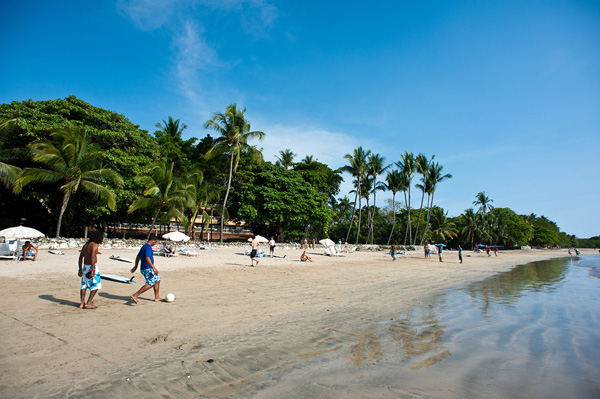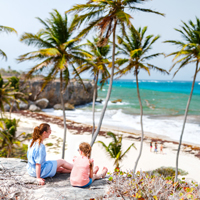
Tamarindo, a picturesque beach town on the Pacific coast of Costa Rica, is known for its surf, sand, and laid-back lifestyle. Public transportation in Tamarindo is not as extensive or sophisticated as what you might find in a major metropolitan area like New York City, but it does offer a few options for getting around. The main forms of public transportation available are local buses, shared shuttle services, and taxis. For an expat living in Tamarindo, it’s possible to get by without a car, especially if you live centrally and are comfortable using these services along with walking or biking. However, for those who wish to explore more remote areas or prefer the convenience of their own vehicle, having a car might be preferable.
Local Buses
The local bus system in Tamarindo is a reliable and cost-effective way to travel within the town and to nearby areas. Operated by several companies, the buses run on a set schedule, connecting Tamarindo to destinations such as Liberia, Santa Cruz, and other beaches like Playa Flamingo and Playa Conchal. The buses are generally safe to use at all times of the day, and they are a common choice for both locals and tourists. Fares are inexpensive, making this an economical option for those on a budget. While the buses cover a variety of routes, they may not always be frequent, and service can be less regular on weekends and holidays, so it’s important to plan accordingly.
Shared Shuttle Services
For those looking for a bit more comfort and convenience, shared shuttle services are available in Tamarindo. These shuttles offer air-conditioned rides and can be booked in advance, providing transportation to and from the airport as well as between different towns and tourist attractions. Companies like Interbus and Gray Line offer scheduled services that are popular among tourists. While more expensive than local buses, shuttles provide a higher level of comfort and are a good option for those traveling with luggage or in groups. They are considered safe and reliable, and the door-to-door service can be a significant advantage over other forms of public transport.
Taxis
Taxis are a ubiquitous sight in Tamarindo and can be hailed on the street or booked in advance. They offer a convenient way to get around, especially after dark or when traveling to areas not served by buses. Taxis in Costa Rica are red with a yellow triangle on the side, and they are required to use a meter (maría) for fares within town limits. For longer trips, it’s common to agree on a fare before departing. Taxis are generally safe, and drivers are accustomed to assisting both local residents and international visitors. While more expensive than buses, taxis provide a direct and private means of transportation.
Walking and Biking
Tamarindo is a small town, and many residents find that walking is sufficient for their daily needs. The town’s compact size means that shops, restaurants, and beaches are often within a reasonable walking distance. For those living a bit further out or who prefer not to walk in the heat, bicycles are a popular alternative. Bike rentals are available, and there are paths and lanes that make cycling around town a pleasant and eco-friendly option. Walking and biking are not only good for the environment but also allow residents to enjoy the natural beauty of Tamarindo at a leisurely pace.
Car Rentals and Ownership
While public transportation, walking, and biking can cover most needs, some expats choose to rent or buy a car for the duration of their stay in Tamarindo. Having a car provides the freedom to explore more remote beaches, the surrounding mountains, and national parks. Car rentals are readily available, but it’s worth noting that rental and ownership costs can be high due to import taxes on vehicles. Additionally, the quality of roads varies greatly outside of town, so a four-wheel-drive vehicle is often recommended. For those who plan to travel frequently or live outside the central area, a car can be a worthwhile investment.
In conclusion, while Tamarindo does not boast an extensive public transportation network like larger cities, it offers enough options to make it possible for expats to live without a car. The combination of local buses, shuttles, taxis, and the feasibility of walking or biking makes getting around Tamarindo manageable. However, for those who wish to explore beyond the town’s borders or desire more convenience, having access to a car can enhance the living experience in this beautiful part of Costa Rica.

